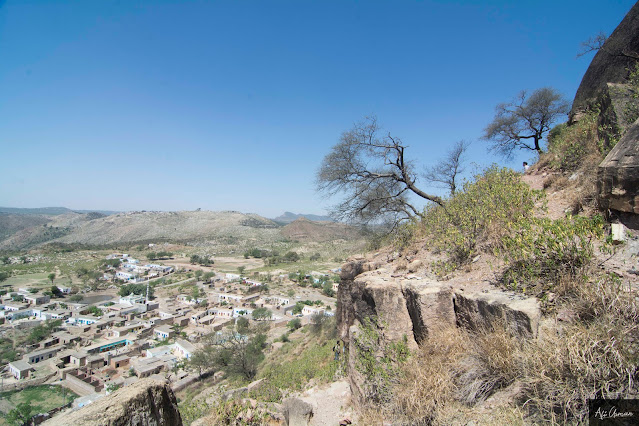Wednesday, 28 March 2018
Nestled in the captivating Jhangar Valley, within the scenic Salt Range, lies a hidden gem waiting to be discovered—the magnificent Kusak Fort. As one ventures through the mystical valley, a humble signboard at Mughal Chowk near Lehr Sultanpur village, around 10 km east of Choa Syedan Shah, proudly proclaims it as the "Highway to Heaven." Despite its name, this weathered and narrow path leads to one of the most evocative sites in the Jhangar Valley—the village of Kusak. Nestled at the foot of a majestic mountain, Kusak is home to the remnants of a fortress that resonates with tales of courage and survival.
Dating back to the 11th century, the Kusak Fort was erected by Raja Jodh, the son of the legendary Janjua Sultan Raja Mall Khan Janjua, renowned for building the iconic Malot Fort in the 10th century. Serving as a testament to strategic brilliance, the Kusak Fort was strategically positioned atop a 13-acre peak known as "Jodh Mountain." Crafted with meticulous skill, the fort was constructed using local red stone and soil, blending harmoniously with the natural surroundings. Within its walls, a traditional palace was erected for the king, accompanied by 70 houses designated for the troops. Two imposing gates adorned the northern entrance, while ponds were ingeniously built to ensure a reliable water supply. Recognizing the diverse religious affiliations of the troops, the king also commissioned the construction of temples within the fort's premises. To sustain the population during times of scarcity, warehouses were established to store grains. The fort was further fortified by an awe-inspiring 370-foot wall, providing a formidable defense against potential threats.
Located strategically within the Salt Range, the Kusak State faced frequent invasions from Turkish, Iranian, and Afghan kings who sought to conquer India. In response to these persistent challenges, the rulers of the Kusak State devised various strategies to safeguard their homeland. They valiantly resisted foreign invaders, sometimes even engaging them in battle, while at other times, forming alliances to secure their position in the Indian subcontinent. In 1290 AD, the Kusak State endured a devastating blow when Jalaluddin Firoz Shah Khilji, the first ruler of the Khilji Dynasty in India, launched a fierce assault. However, the Janjua Rajputs eventually managed to regain control over the region. In 1398 AD, Amir Taimur posed a renewed threat to the Kusak State, but the ruler at that time, in collaboration with the Janjua Sardars, assured the invader of their support in his campaign to conquer Delhi. Consequently, the fort was spared from imminent destruction.
The year 1810 marked a challenging period for the Janjua Rajputs. In the first month of that year, Maharaja Ranjit Singh, the visionary leader who founded the Sikh Empire in Punjab, besieged the Kusak Fort. Sultan Fateh Mohammad Khan, the reigning king of the Kusak State, valiantly resisted Ranjit Singh's advances, defending the fort for a grueling six months. Despite enduring scarcity of drinking water and food, Sultan Mohammad refused to surrender. Eventually, recognizing the futility of further resistance, Sultan Mohammad negotiated a truce with Ranjit Singh. The prolonged siege had taken a toll on the lives of the fort's inhabitants, and with no other recourse, Sultan Mohammad and his tribe relocated to Haranpur, where they resided for 40 years. It was in Haranpur that Sultan Mohammad passed away in 1830. However, in 1850, his family returned to their ancestral lands and established Lehr Sultanpur village adjacent to Kusak village. The lost Kusak State remained under the ownership and stewardship of Sultan Fateh Mohammad Khan's descendants.
The story of Kusak Fort is one of resilience, valor, and the enduring spirit of its rulers and inhabitants. Today, as visitors explore the remnants of this once-majestic fort, they are transported back in time, experiencing the echoes of a bygone era. The Kusak Fort stands not only as a testament to the strategic brilliance of its architects but also as a symbol of the indomitable human spirit in the face of adversity.


































































